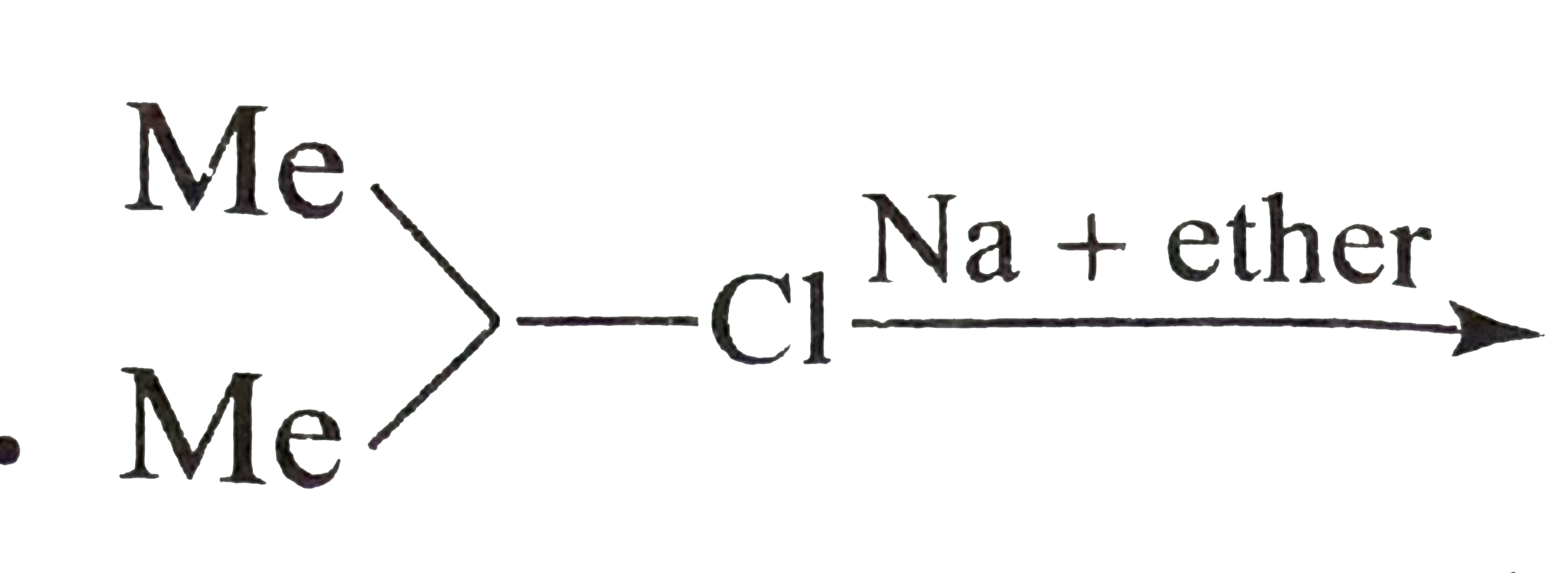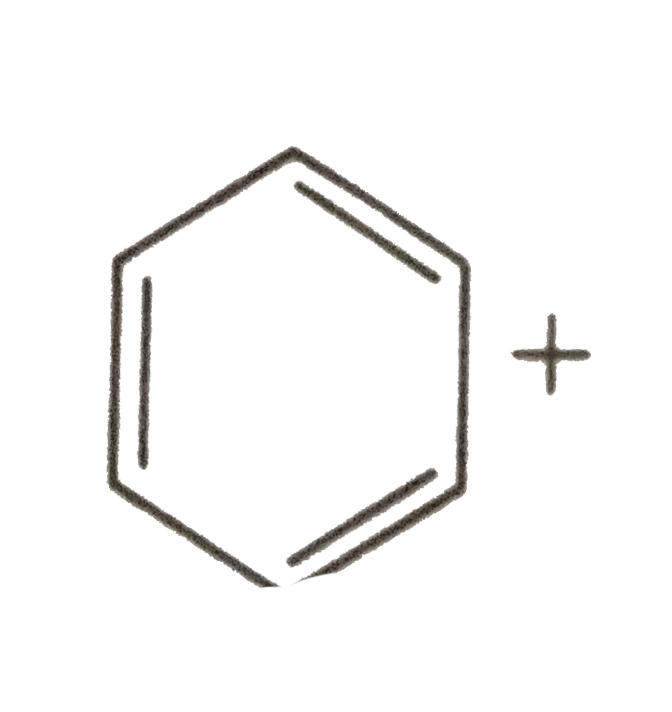PhCH2CH2CH3(i)CrO2Cl2/CCl4−−−−−−−−−−−−−−→(ii)h2O(A)
The product (A) is:
a.PhCHO
b.PhCH2CHO
c.PhCH2CH2CHO
d.PhCH3∣PhCH−CHO
The correct Answer is:C
To solve the given question, we need to analyze the reaction involving the compound PhCH2CH2CH3 with the reagents CrO2Cl2 in the presence of CCl4 and H2O. This reaction is known as the Etard reaction, which is used to convert terminal alkyl groups into aldehydes.
1. Identify the Structure of the Compound:
The compound PhCH2CH2CH3 can be represented as:
Ph−CH2−CH2−CH3
Here, "Ph" represents the phenyl group (C6H5).
2. Understand the Reagents:
The reagent CrO2Cl2 in the presence of CCl4 is used to perform the Etard reaction. This reagent will oxidize the terminal methyl group (–CH3) of the alkyl chain to an aldehyde.
3. Formation of the Intermediate:
During the Etard reaction, the chromium complex is formed. The intermediate can be represented as:
Ph−CH2−CH2−C(OCrCl)_2
This intermediate contains a chromium atom bonded to the carbon that was initially part of the terminal methyl group.
4. Hydrolysis of the Intermediate:
The presence of water H2O leads to hydrolysis of the chromium complex. The chromium complex will facilitate the removal of the chromium and the formation of an aldehyde. The terminal carbon will be oxidized to form an aldehyde group (–CHO).
5. Final Product Formation:
After hydrolysis, the final product will be:
Ph−CH2−CH2−CHO
This compound is known as phenylpropanal.
6. Identify the Correct Option:
Based on the structure of the final product, the correct answer is option C, which corresponds to phenylpropanal.
Final Answer:
The product (A) is phenylpropanal.
The compound PhCH2CH2CH3 can be represented as:
Ph−CH2−CH2−CH3
Here, "Ph" represents the phenyl group (C6H5).
The reagent CrO2Cl2 in the presence of CCl4 is used to perform the Etard reaction. This reagent will oxidize the terminal methyl group (–CH3) of the alkyl chain to an aldehyde.
During the Etard reaction, the chromium complex is formed. The intermediate can be represented as:
Ph−CH2−CH2−C(OCrCl)_2
This intermediate contains a chromium atom bonded to the carbon that was initially part of the terminal methyl group.
The presence of water H2O leads to hydrolysis of the chromium complex. The chromium complex will facilitate the removal of the chromium and the formation of an aldehyde. The terminal carbon will be oxidized to form an aldehyde group (–CHO).
After hydrolysis, the final product will be:
Ph−CH2−CH2−CHO
This compound is known as phenylpropanal.
Based on the structure of the final product, the correct answer is option C, which corresponds to phenylpropanal.
The product (A) is phenylpropanal.
Topper's Solved these Questions
- REDUCTION AND OXIDATION REACTION OF ORGANIC COMPOUNDSBOOK - CENGAGE CHEMISTRY ENGLISHCHAPTER - REDUCTION AND OXIDATION REACTION OF ORGANIC COMPOUNDSEXERCISE - Exercise (Assertion And Reasoning)
10 Videos
- REDUCTION AND OXIDATION REACTION OF ORGANIC COMPOUNDSBOOK - CENGAGE CHEMISTRY ENGLISHCHAPTER - REDUCTION AND OXIDATION REACTION OF ORGANIC COMPOUNDSEXERCISE - Exercise Archives (Subjective)
26 Videos
- REDUCTION AND OXIDATION REACTION OF ORGANIC COMPOUNDSBOOK - CENGAGE CHEMISTRY ENGLISHCHAPTER - REDUCTION AND OXIDATION REACTION OF ORGANIC COMPOUNDSEXERCISE - Exercise (Multiple Correct)
35 Videos
- QUALITATIVE INORGANIC SALT ANALYSISBOOK - CENGAGE CHEMISTRY ENGLISHCHAPTER - QUALITATIVE INORGANIC SALT ANALYSISEXERCISE - Viva Voce Questions And Part-C (Analysis Of Cations)
42 Videos
- SOLID STATEBOOK - CENGAGE CHEMISTRY ENGLISHCHAPTER - SOLID STATEEXERCISE - Ex 1.2 (Objective)
9 Videos
Similar Questions
Knowledge Check
 Br2−−→CCl4(i)alc. KOH−−−−−−−→(ii)NaNH2(A)major, Product (A) is :AH2C=CH−CH=CH2BCH3−C≡C−CH3CCH3−CH2−C≡CHDCH3−CH=C=CH2
Br2−−→CCl4(i)alc. KOH−−−−−−−→(ii)NaNH2(A)major, Product (A) is :AH2C=CH−CH=CH2BCH3−C≡C−CH3CCH3−CH2−C≡CHDCH3−CH=C=CH2CH3−CH∣CH3−CH2−CH3Cl2−−−−−→hv(x) = Number of monochloro product including stereoisomers.
A4B5C6D7
CH3−CH3∣CH−NO2NaNO2+H2SO4−−−−−−−−−−−−→at0∘C(A). (A) is:
View SolutionThe number of bonds between carbon and oxygen atoms in major product of the following reaction is________.
CH3OH∣CHCH2CH2NH2ethyl formate (1 equiv)−−−−−−−−−−−−−→triethylam in e
View SolutionIn the transformations
PhCH=CH2ArCO3H−−−−−−→CH2Cl2A1.LiAlH4,Et2O−−−−−−−−−−→2.H2OB
The end product (B) is
View SolutionWrite the main product (s) in each of the following reaction :
(i) CH3−CH3∣C∣CH3−O−CH3+HI→
(ii) CH3−CH=CH2(i)B2H6−−−−−−−−−−−→(ii)3H2O2/OH−
(iii) C6H5−OH(i)aq.NaOH−−−−−−−−→(ii)CO2,H+
View SolutionWhat is the final product of the reaction ?
(CH−)(3)HC=C(CH3)CH2CH3(i)BH3/THF−−−−−−−−−→(ii)H2O2/¯¯¯OHPCC−−−−→CH2Cl2(i)CH3MgBr−−−−−−−−→(ii)H3O+
View Solution (B)2mol−−−−−−→Cl2+hv (C)2mol−−−−−−−−→Alc.KOH
(B)2mol−−−−−−→Cl2+hv (C)2mol−−−−−−−−→Alc.KOH
(D) CH2=CH2−−−−−−−→Δ (E)
The final product (E) is :
View Solution

